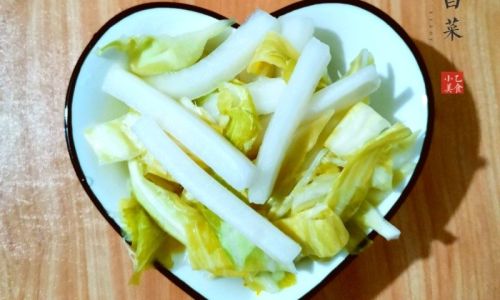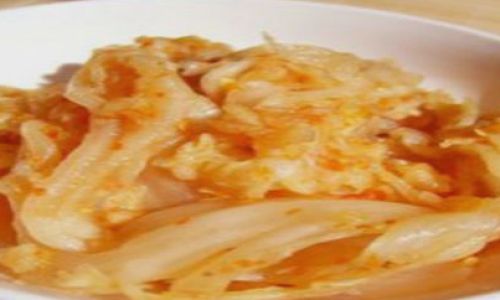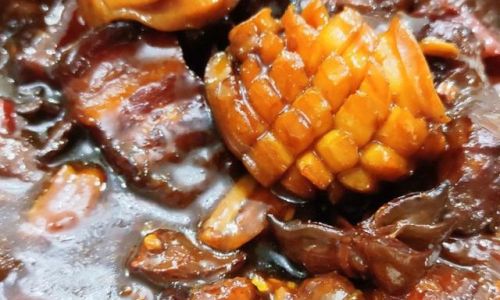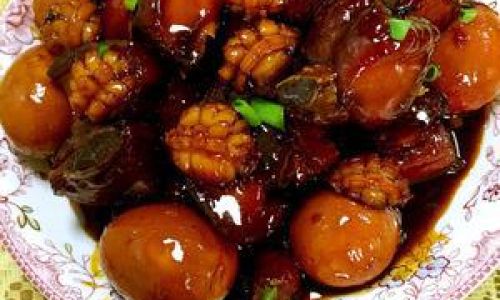Table of content
Kimchi, a staple in Korean cuisine, is a fermented dish that has captivated taste buds worldwide with its bold flavors and health benefits. At its core, the most iconic variation is baechu-kimchi, made primarily with Napa cabbage. This spicy, tangy, and umami-rich condiment is not merely a side dish but a cultural symbol, embodying tradition, patience, and the alchemy of fermentation. Crafting authentic kimchi at home requires precision, the finest ingredients, and an understanding of the delicate balance between spice, salt, and time. Below is a comprehensive guide to mastering the art of making Napa cabbage kimchi, from selecting the freshest produce to achieving the perfect fermentation.

The Essence of Kimchi: A Brief Cultural Overview
Before diving into the recipe, it is essential to appreciate the cultural significance of kimchi. For centuries, Koreans have relied on fermentation to preserve vegetables through harsh winters, transforming seasonal bounty into a year-round source of nutrition. Kimchi is more than sustenance—it is a source of pride, with regional variations reflecting local ingredients and climates. Napa cabbage kimchi, with its crisp texture and vibrant red hue, is the most universally recognized type, served alongside rice, soups, and grilled meats. Its popularity has transcended borders, with food enthusiasts and health-conscious individuals embracing its probiotic-rich profile and complex flavor profile.
Ingredients: The Foundation of Flavor
Creating exceptional kimchi begins with sourcing high-quality ingredients. Each component plays a pivotal role in shaping the final taste and texture. Below is a detailed list of what you will need:
Primary Ingredients
-
Napa Cabbage (2 medium heads, approximately 6–7 pounds):
Select cabbages with crisp, tightly packed leaves and minimal blemishes. The size of the cabbage will influence salting time and overall yield.
-
Coarse Sea Salt (1 cup):
Avoid iodized salt, as it can inhibit fermentation. Coarse sea salt or kosher salt is ideal for drawing moisture from the cabbage without over-salting.
-
Korean Red Pepper Flakes (Gochugaru, 1–1.5 cups):
Crucial for color and heat, gochugaru varies in spiciness. Adjust the quantity based on your preference for mild to fiery kimchi.
-
Sweet Rice Flour Paste (1/4 cup sweet rice flour + 1.5 cups water):
This thickener binds the seasoning paste, ensuring it adheres to the cabbage leaves.
Aromatics and Seasonings
-
Garlic (1 head, minced):
Use fresh garlic for a pungent, aromatic base.
-
Ginger (1 thumb-sized piece, grated):
Adds warmth and depth to the flavor profile.
-
Onion (1 medium, roughly chopped):
White or yellow onions contribute sweetness when blended into the paste.
-
Asian Pear or Apple (1/2 cup, grated):

Provides natural sweetness and aids fermentation.
-
Fish Sauce (1/4 cup) or Salted Shrimp (Saeujeot, 2 tablespoons):
These umami-rich ingredients enhance savory notes. For a vegetarian version, substitute with miso paste or kelp powder.
-
Scallions (1 bunch, cut into 2-inch pieces):
Adds freshness and a subtle oniony flavor.
-
Carrot (1 medium, julienned):
For color, crunch, and a touch of sweetness.
-
Daikon Radish (1/2 cup, julienned):
Optional but traditional, daikon adds a mild peppery kick.
Equipment
- A large mixing bowl
- A colander or strainer
- Gloves (to protect hands from chili flakes)
- A sterilized glass jar or traditional onggi pot (for fermentation)
- A blender or food processor
Step-by-Step Preparation: From Cabbage to Kimchi
Preparing the Cabbage
-
Trim and Quarter:
Remove the outer leaves of the cabbage and discard any damaged ones. Cut each cabbage into quarters, leaving the core intact to hold the leaves together. -
Salt the Cabbage:
In a large bowl, dissolve 1/2 cup of salt in 8 cups of water. Submerge each cabbage quarter in the brine, ensuring all layers are coated. Alternatively, sprinkle salt between the leaves, using approximately 2 tablespoons per quarter. This step draws out moisture and softens the cabbage. -
Rest and Rinse:
Let the cabbage sit for 4–6 hours, flipping occasionally to ensure even salting. Rinse thoroughly under cold water to remove excess salt, then drain in a colander for 30 minutes.
Crafting the Seasoning Paste
-
Sweet Rice Flour Paste:
In a small saucepan, whisk sweet rice flour with 1.5 cups water. Cook over medium heat until thickened (3–5 minutes), stirring constantly to prevent lumps. Let cool. -
Blend Aromatics:
In a blender, combine garlic, ginger, onion, Asian pear, fish sauce (or substitute), and 1/4 cup water. Blend until smooth, then transfer to a large mixing bowl. -
Incorporate Gochugaru:
Add gochugaru and sweet rice paste to the blended mixture. Stir until a thick, vibrant red paste forms. Adjust spice levels to taste.
Combining Cabbage and Seasoning
-
Massage the Paste:
Wearing gloves, gently massage the seasoning paste into each cabbage leaf, ensuring even coating. Work in batches, adding scallions, carrots, and daikon as you go. -
Pack the Jar:
Transfer the seasoned cabbage to a sterilized jar, pressing down firmly to eliminate air pockets. Leave 2 inches of headspace to prevent overflow during fermentation.
The Fermentation Process
-
Initial Fermentation (Room Temperature):
Seal the jar and let it ferment at room temperature (65–75°F or 18–24°C) for 1–5 days. Burp the jar daily to release built-up gases. -
Taste Test:
After 24 hours, begin tasting the kimchi daily. Fermentation time varies based on temperature and taste preference:- 1–2 days: Mild, crisp, and slightly sweet.
- 3–4 days: Tangy, effervescent, and fully flavored.
- 5+ days: Pungent, soft, and intensely funky.
-
Refrigeration:
Once desired flavor is achieved, transfer the jar to the refrigerator. Cold temperatures slow fermentation, preserving the kimchi’s complexity for months.
Troubleshooting Common Issues
-
Mold or Surface Scum:
Scrape off any visible mold and ensure the kimchi is fully submerged. Use a clean spoon during tasting to prevent contamination. -
Overly Salty Kimchi:
Rinse the cabbage under cold water before seasoning, or add a pinch of sugar to balance saltiness. -
Slimy Texture:
Over-fermentation or insufficient salting can cause sliminess. Adjust fermentation time and salt ratios in future batches.
Storage and Serving Suggestions
-
Shelf Life:
Refrigerated kimchi lasts 3–6 months, with flavors evolving over time. -
Pairing Ideas:
Serve as a side dish with rice, incorporate into stews (kimchi jjigae), or fry into crispy pancakes (kimchijeon). -
Creative Uses:
Blend ripe kimchi into sauces, toss with noodles, or use as a pizza topping for a spicy twist.
The Science Behind Fermentation
Kimchi’s magic lies in lacto-fermentation, where lactic acid bacteria (LAB) convert sugars into lactic acid. This process not only preserves the cabbage but also creates probiotics, vitamins, and enzymes that aid digestion. The salt brine creates an anaerobic environment, allowing LAB to thrive while suppressing harmful microbes. The result is a living food that evolves with time, offering layers of flavor and health benefits.
Regional Variations and Modern Twists
While Napa cabbage kimchi remains the gold standard, regional adaptations abound. In coastal areas, oysters or clams are added for brininess, while mountainous regions might incorporate fermented soybean paste (doenjang). Modern chefs experiment with unconventional ingredients like pineapple or miso, pushing the boundaries of tradition while honoring its essence.
Conclusion: The Joy of Homemade Kimchi
Crafting kimchi is an act of love—a dance between intuition and technique. Each batch tells a story: of the cabbage’s crispness, the chili’s heat, and the fermenter’s patience. Whether enjoyed fresh or aged, homemade kimchi rewards the effort with unparalleled flavor and a connection to centuries of culinary heritage. So, roll up your sleeves, embrace the process, and savor the fruits of your labor—one spicy, tangy bite at a time.
Word Count: 1,450+
This guide ensures that even novice fermenters can achieve kimchi perfection, blending tradition with modern accessibility. Experimentation is encouraged—after all, the best kimchi is the one you make your own.






0 comments